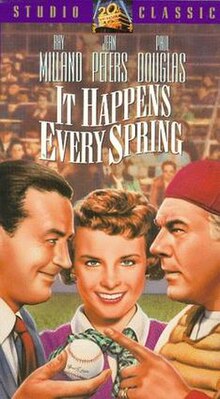
Eldred Gregory Peck was an American actor and one of the most popular film stars from the 1940s to the 1970s. In 1999, the American Film Institute named Peck the 12th-greatest male star of Classic Hollywood Cinema.

The Paradine Case is a 1947 courtroom drama with elements of film noir set in England, directed by Alfred Hitchcock and produced by David O. Selznick. Selznick and an uncredited Ben Hecht wrote the screenplay from an adaptation by Alma Reville and James Bridie of the 1933 novel by Robert Smythe Hichens. The film stars Gregory Peck, Ann Todd, Alida Valli, Charles Laughton, Charles Coburn, Ethel Barrymore, and Louis Jourdan. It tells of an English barrister who falls in love with a woman who is accused of murder, and how it affects his relationship with his wife.

Destination Tokyo is a 1943 black and white American submarine war film. The film was directed by Delmer Daves in his directorial debut, and the screenplay was written by Daves and Albert Maltz, based on an original story by former submariner Steve Fisher. The film stars Cary Grant and John Garfield and features Dane Clark, Robert Hutton, and Warner Anderson, along with John Ridgely, Alan Hale Sr. and William Prince.

The Big Clock is a 1948 American thriller directed by John Farrow and adapted by novelist-screenwriter Jonathan Latimer from the 1946 novel of the same title by Kenneth Fearing.

Francis Bosley Crowther Jr. was an American journalist, writer, and film critic for The New York Times for 27 years. His work helped shape the careers of many actors, directors and screenwriters, though his reviews were sometimes regarded as unnecessarily harsh. Crowther was an advocate of foreign-language films in the 1950s and 1960s, particularly those of Roberto Rossellini, Vittorio De Sica, Ingmar Bergman, and Federico Fellini.

The Mad Ghoul is a 1943 American horror film directed by James Hogan and starring Turhan Bey, Evelyn Ankers, and David Bruce, and featuring George Zucco, Robert Armstrong, and Milburn Stone. The film is about the scientist Dr. Alfred Morris and his assistant Ted Allison. Morris, who is obsessed with an ancient Mayan life-preserving process to the point of madness, has fallen in love with Allison's girlfriend, the concert singer Isabel Lewis. Morris decides to use Allison for his eternal-life experiments, transforming him into a zombie who slowly recalls his past life, but is unaware of his undead status.

The Man I Love is a 1947 American film noir melodrama starring Ida Lupino, Robert Alda, Andrea King, and Bruce Bennett. Directed by Raoul Walsh, the film is based on the novel Night Shift by Maritta M. Wolff. The title is taken from the George and Ira Gershwin song "The Man I Love", which is prominently featured.
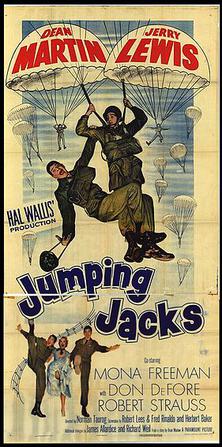
Jumping Jacks is a 1952 American semi-musical comedy film starring the comedy team of Martin and Lewis. The film was directed by Norman Taurog, and released by Paramount Pictures. It was one of the military comedies that marked the duo's early career. Brigadier General Frank Dorn, Deputy Chief of the US Army's Information Office praised Jumping Jacks as something that would "contribute to troop morale within the Army."

The Boy with Green Hair is a 1948 American fantasy-drama film in Technicolor directed by Joseph Losey in his feature film directorial debut. It stars Dean Stockwell as Peter, a young war orphan who is subject to ridicule after his hair mysteriously turns green, and is based on the 1946 short story of the same name. Co-stars include Pat O'Brien, Robert Ryan, and Barbara Hale. The film was released on DVD on March 10, 2010, as part of the Warner Archive Collection.
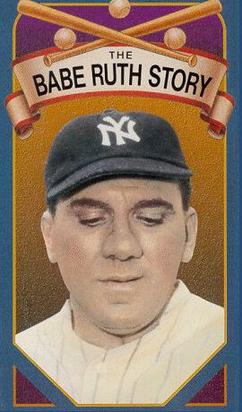
The Babe Ruth Story is a 1948 American biographical film about professional baseball player Babe Ruth (1895–1948), who achieved fame as a slugging outfielder for the New York Yankees. Directed by Roy Del Ruth, the film stars William Bendix as the ballplayer and Claire Trevor as his wife Claire Merritt Hodgson. Critics faulted the film's heavy-handedness and direction, and it is said by many to be one of the worst films ever made.

Something to Live For is a 1952 American drama film starring Joan Fontaine, Ray Milland, and Teresa Wright, directed by George Stevens, and released by Paramount Pictures. The screenplay by Dwight Taylor was the first to focus on the Alcoholics Anonymous program as a means of overcoming an addiction to liquor.

Everybody Does It is a 1949 comedy film starring Paul Douglas, Linda Darnell and Celeste Holm. In the film, a businessman's wife tries to become an opera star, failing miserably due to her lack of talent. When it turns out that her totally untrained husband is found to have a marvelous singing voice and goes on tour under an assumed name, his wife is livid.
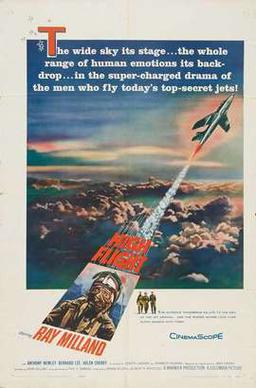
High Flight is a 1957, CinemaScope, British, cold war film, directed by John Gilling and featuring Ray Milland, Bernard Lee and Leslie Phillips. High Flight was filmed with the co-operation of the Royal Air Force (RAF). The title of the film was derived from the poem of the same title by Pilot Officer John Gillespie Magee, Jr., an American aviator who flew for the Royal Canadian Air Force (RCAF) and lost his life in 1941 over RAF Cranwell, where much of the film was shot.
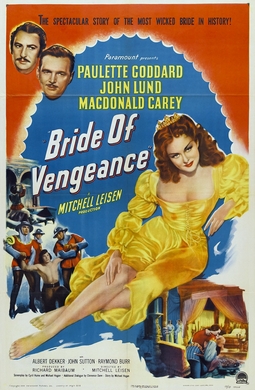
Bride of Vengeance is a 1949 American historical drama film directed by Mitchell Leisen and starring Paulette Goddard, John Lund and Macdonald Carey. Produced and distributed by Paramount Pictures, it is set in the Italian Renaissance era. Ray Milland was originally cast in the film but refused the assignment, leading the studio to suspend him for ten weeks.

Singapore is a 1947 American film noir crime romance film directed by John Brahm and starring Fred MacMurray, Ava Gardner and Roland Culver. The film was remade as Istanbul (1957) with the location moved to Turkey, and Errol Flynn and Cornell Borchers in the starring roles.

The Lone Wolf in London is a 1947 American mystery crime film directed by Leslie Goodwins and starring Gerald Mohr, Nancy Saunders and Eric Blore. The picture features the fictional Scotland Yard detective the Lone Wolf who travels to London, and solves the mystery of some missing jewels. It was the penultimate Lone Wolf film, followed by The Lone Wolf and His Lady in 1949, and the last for Mohr in the lead role.
Satellite in the Sky is a 1956 British CinemaScope science fiction film in Warner Color, produced by Edward J. Danziger and Harry Lee Danziger, directed by Paul Dickson, and starring Kieron Moore, Lois Maxwell, Donald Wolfit, and Bryan Forbes. The film was distributed by Warner Bros. Pictures. Special effects were by Wally Veevers, who would later work on Stanley Kubrick's 2001: A Space Odyssey (1968).
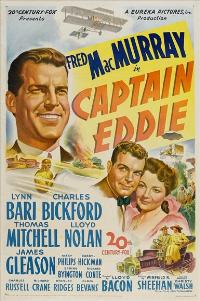
Captain Eddie is a 1945 American drama film directed by Lloyd Bacon, based on Seven Were Saved by "Eddie" Rickenbacker and Lt. James Whittaker's We Thought We Heard the Angels Sing. The film stars Fred MacMurray, Lynn Bari and Charles Bickford. Captain Eddie is a "biopic" of Rickenbacker, from his experiences as a flying ace during World War I to his later involvement as a pioneering figure in civil aviation, and his iconic status as a business leader who was often at odds with labour unions and the government.
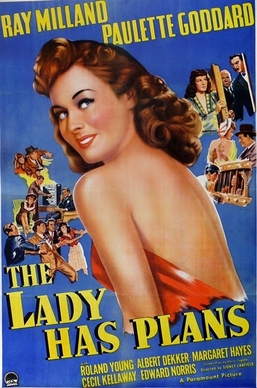
The Lady Has Plans is a 1942 American comedy film spy thriller film directed by Sidney Lanfield and starring Ray Milland, Paulette Goddard and Roland Young. It was produced ad distributed by Paramount Pictures as a World War II espionage film set in neutral Portugal.
